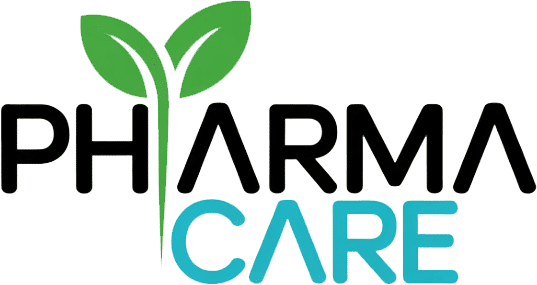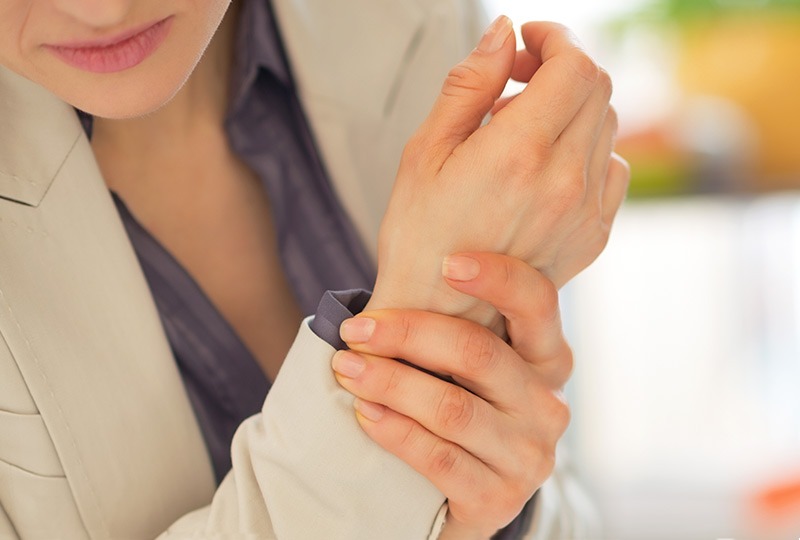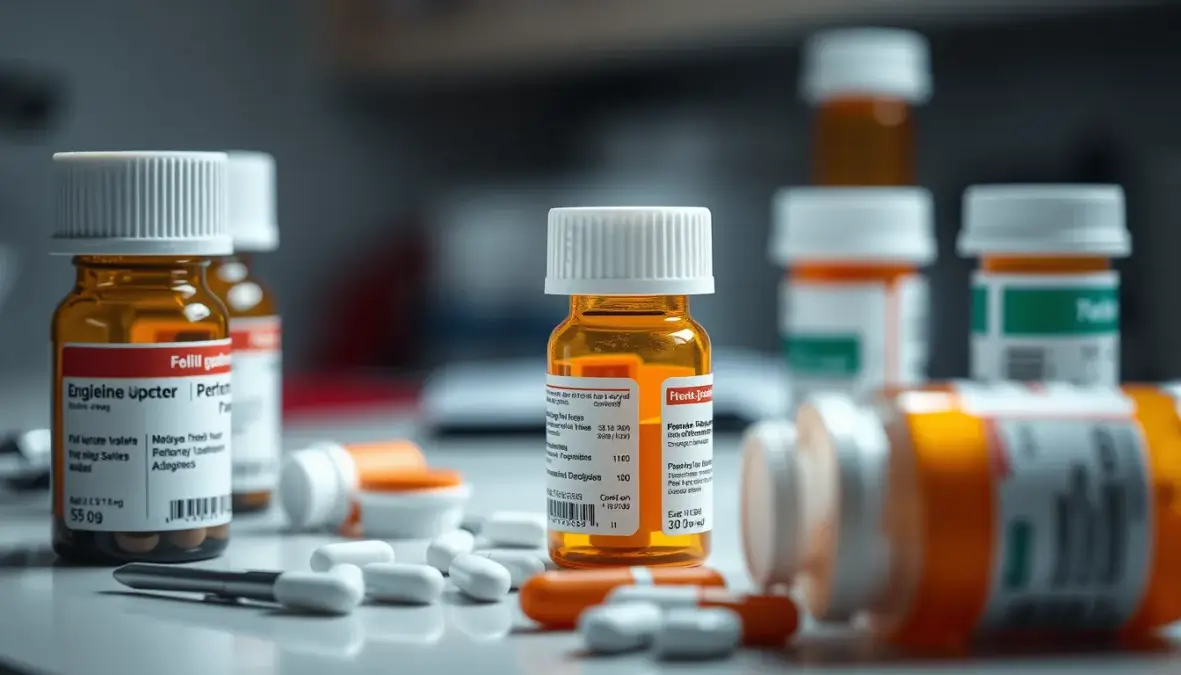What is Etopan (Etopan/Etodolac)?
Ethiopia, also called Etopan or Etodolac, is a common drug from the group of NSAIDs (Non-Steroidal Anti-Inflammatory Drugs). These drugs are intended for pain relief, fever reduction, and treatment of various infections. The active ingredient in the drug is Etodolac, which works by inhibiting the activity of the enzymes COX-1 and COX-2. This inhibition leads to a reduction in the production of prostaglandins, i.e. inflammatory substances in the body.
It is important to understand how this mechanism of action works. When there is an inflammatory process, the body produces substances that activate pain receptors and promote swelling and redness in the tissues. Prostaglandins are an essential part of this process. Therefore, reducing their levels can significantly relieve pain and inflammation.
Etopan, also known in spoken Hebrew as "nonsteroidal anti-inflammatory drug", is marketed under various trade names. However, in Israel it is mainly known as "Etopan" or "Etopan". There are various dosages, but the most common are Etopan 400 mg andEtopan 600 mg, along with types of tablets in different formats. Many people use this medicine to treat back pain, joint pain, menstrual pain, and also to treat chronic inflammation such as rheumatoid arthritis or osteoarthritis.
It should be remembered that any use of the drug requires consultation with a doctor or pharmacist. It is important to check compatibility with the personal medical condition, especially when it comes to prolonged use or while taking other medications. Also, even if the preparation can be obtained under a doctor's prescription, it is necessary to be aware of the potential side effects and possible risks.
What is Etophan used for? (Common indications)
Many people ask: "Ethiopia, why is it good?"The answer is varied, as the spectrum of effects and properties of the preparation is wide. Below is a breakdown of some of the indications:
- Treatment of acute and chronic pain
- Back pain: The use ofEtodolac Can help reduce acute or persistent back pain. Studies show that NSAIDs improve range of motion and relieve pain resulting from spinal compression or local inflammation.
- Headaches: Whether it is a tension headache or a headache associated with tight muscles in the neck area, these types of medications may be helpful, but a doctor should be consulted if the pain becomes chronic.
- Joint pain: Etopan is known to help with a variety of joint pain, including knee pain and pain in other large joints. Sometimes, medications like paracetamol are not enough, and then Etopan provides stronger pain relief.
- Treatment of arthritis
- Osteoarthritis: This is arthritis that results from the erosion of cartilage over time. Here, Etopan (Etodolac) reduces inflammation and pain.
- Rheumatoid Arthritis: This is an autoimmune disease that causes chronic joint damage and ongoing pain. Ethiopan relieves the symptoms, but does not cure the disease itself.
- Relieving menstrual pain
- NSAIDs are known for their ability to lower prostaglandin levels in the uterus, thus reducing the intensity of contractions that lead to pain. Therefore, many will prefer Etofen for this purpose, although there are other alternatives on the market.
- Fever reduction
- The question is often asked: "Does Ethiopan reduce fever?"The answer is yes. Like other anti-inflammatory drugs, Etodolac is also able to reduce body temperature caused by inflammatory or infectious processes. However, it is not an antibiotic, but only a symptomatic fever reducer.
Etopine may be useful for a variety of medical conditions, but it is important to follow medical instructions and not exceed the recommended dosage. This way, you can take advantage of the drug's benefits and reduce the potential for risk.
Dosages and instructions for taking
To ensure correct and safe use, the following guidelines must be followed. They include differences between Etopan 400 mg between Etopan 600 mg, methods of administration and frequency of use.
A. Different doses – Etopan 400 mg vs. Etopan 600 mg
- Etopan 400 mg
- This is the most common dosage. Typically, doctors prescribe a 400 mg tablet 2 to 3 times a day, depending on the doctor's instructions and the severity of the pain or inflammation.
- This dosage is especially common for treating acute pain (e.g. sudden back pain) or persistent moderate pain.
- Etopan 600 mg
- The 600 mg dose is sometimes appropriate for more severe or chronic conditions, such as persistent arthritis or severe pain that has not responded well to a lower dose.
- Sometimes, the doctor will choose a combination of 600 mg once or twice a day, rather than 400 mg three times a day, depending on the medical condition and his professional judgment.
Do not use higher doses than recommended by your doctor. Overdosing may increase the risk of side effects, including gastrointestinal bleeding or adverse effects on the kidneys.
B. Is it possible to cross the Ethiopian sphere?
The ability to break the tablet sometimes depends on the type of coating. Some of the tabletsEtopan 400 mg or Etopan 600 mg They come with a coating that is intended to protect the stomach. This coating can be sensitive to breaking, as it is designed to disintegrate completely in the digestive tract. If the manufacturer has specified that the pill can be broken in half (and sometimes there is a special mark that allows for safe breaking), you can do so. However, it is always a good idea to consult a pharmacist or doctor.
In cases where there is no explicit indication or the doctor has not approved, it is recommended not to cross. Unapproved breaking may impair the effectiveness of the medication or increase the risk of stomach side effects.
C. Taking with or without food?
Most doctors recommend taking Etophan with or immediately after a meal. Food helps reduce irritation of the stomach lining, thus reducing the risk of irritation and possible bleeding. If someone suffers from severe stomach sensitivity or chronic inflammation of the digestive tract, it is advisable to consider taking it along with stomach-protecting preparations (such as omeprazole).
However, in an emergency or in the event of sudden pain, it is sometimes possible to take a single dose without food, but it is best to consult a doctor regarding recommendations.
D. How often can it be taken? How long does Etophan take effect?
The duration of the drug's effect usually ranges from 6–12 hours, depending on the dosage, the form of presentation, and the individual body's reactions. Some patients feel relief throughout the day if they take Etopan 600 mg twice a day, while others will prefer Etopan 400 mg at 8-hour intervals.
If the question is "How long does Ethiopan take to work?", the answer is not uniform. Usually, pain relief begins to be felt about one to two hours after taking the pill. However, the result depends greatly on the patient and the type of pain. It is important to follow the doctor's instructions, and not to prolong use without proper medical supervision.
Side effects of Etopan
Like any other medicine,Etopan (Etodolac) There may be side effects. Most people will not experience any significant problems, but it is always important to be aware of the possibilities.
A. Common side effects
- Digestive symptoms:
- Abdominal pain, gas, or a general feeling of discomfort in the abdomen.
- Nausea is sometimes accompanied by vomiting.
- Diarrhea or constipation (some patients report constipation).
- Feeling of heartburn.
Sometimes, taking it with food reduces these effects.
- Dizziness and headaches:
- Some patients report feeling dizzy or experiencing some headaches.
- This is usually a temporary effect. However, if it is significant or prolonged, it is important to report it to your doctor.
B. More serious side effects
- Bleeding and ulcers in the digestive system:
- NSAIDs can damage the stomach lining. Prolonged or uncontrolled use increases the risk of bleeding or the development of ulcers in the stomach or duodenum.
- Pay attention to black stools, bloody vomiting, or severe abdominal pain.
- Effect on kidneys:
- Prolonged use of ethapen, especially at high doses, can damage the kidneys. This is especially important for people with underlying conditions, such as high blood pressure or kidney failure.
- It is important to perform periodic blood tests to ensure that kidney function is maintained properly.
- Effect on the liver:
- In rare cases, liver damage may occur. Watch for symptoms such as jaundice, dark urine, or unusual fatigue.
- Cardiovascular events:
- Studies show that some NSAIDs slightly increase the risk of heart attacks and strokes, especially with long-term use or at high doses. However, the risk for Etodolac is considered lower than for some other drugs, but it is still present.
C. Is Ethiopia dangerous?
Many wonder: "Is Ethiopia dangerous?"In reasonable doses and under the guidance of a doctor, most patients use it without any particular problem. The risk increases when the dose is exceeded, additional medications are combined without the doctor's knowledge, or continued for a long time without monitoring. If there are underlying diseases such as high blood pressure, heart disease, stomach ulcers or kidney problems - the doctor should be informed in advance.
As with any medication, the combination of professional monitoring, appropriate dosage, and short-term use helps prevent medical problems.
D. Does ethophane cause fatigue?
Etodolac is not known to be a classic cause of fatigue, but some patients may experience fatigue or weakness following feelings of dizziness or decreased pain that puts them in a more relaxed state. Keep in mind that the body is sometimes dealing with chronic inflammation or pain, and when relieved with Etodolac, it may "demand" rest to recover. Therefore, some people report general fatigue. If extreme fatigue occurs, it is best to consult a doctor.
Interactions with drugs and alcohol
The combination of Ethiopia With other substances, it may have different consequences. It is important to know some of the main interactions:
- Ethiophane and alcohol
- Combining alcohol with NSAIDs, such as Etodolac, may increase the risk of gastrointestinal bleeding.
- People who consume large amounts of alcohol or take high doses of ethophane over a long period of time should be especially careful.
- Consuming alcohol while taking this medication is not recommended at all.
- Combination with blood thinners
- If you are taking Warfarin, Enoxaparin, or any other blood thinner, the risk of bleeding may be even greater. It is important to inform your doctor if you are taking blood thinners.
- Blood pressure lowering medications
- Some NSAIDs may weaken the effectiveness of medications designed to lower blood pressure, such as ACE inhibitors or ARBs (for example, enalapril and losartan).
- Monitoring of blood pressure values is necessary, especially if you use etoposide over a long period of time.
- Variables
- Diuretics (such as Fusid) may be less effective when combined with Etodolac. Additional stress on the kidneys may also occur.
- Additional medications
- If the patient is taking steroids, antipsychotics, or anti-anxiety medications, it is recommended to check with a doctor whether there are any special risks.
The basic rule is to always keep your doctor and pharmacist informed of your current medication list, including supplements, vitamins, or herbs. This way you can avoid unwanted interactions.
Additional Frequently Asked Questions
A. Does Etophan reduce fever?
yes, Ethiopia (Etopan / Etodolac) can reduce fever due to its anti-inflammatory and antipyretic (fever-reducing) activity. However, in the case of persistent high fever, a doctor should be consulted regarding appropriate treatment.
B. Is Ethiophene considered an antibiotic?
No. Many people mistakenly think that anti-inflammatory drugs are antibiotics, but Ethiopia It is not. It is a medicine for pain relief and reducing inflammation, but it does not work against bacteria and is not intended to cure bacterial infections.
C. Is Etopan suitable for pregnancy or breastfeeding?
Doctors generally avoid giving NSAIDs during pregnancy, especially in the third trimester. There are potential risks of damage to the fetus's blood vessels and development. Also, data regarding breastfeeding are limited, and substances from the drug may pass into breast milk. Therefore, you should consult your doctor with any questions related to pregnancy and breastfeeding.
D. Is it permissible to give Etophan to children?
usually, Ethiopia It is not recommended for children under a certain age, especially very young children. There are other medications with a better safety profile for children. Your doctor will weigh the benefits against the risks in each individual case.
E. Is Etopan suitable for treating long-term back pain?
Yes, many patients use it for relief. Back pain, especially when the pain is due to local inflammation or a temporary aggravation. However, prolonged treatment is recommended under medical supervision, especially when the pain is chronic and accompanied by complex orthopedic problems.
F. Does Etophan help with headaches?
In some cases, Ethiopan can help reduce headacheHowever, it should be noted that in the case of frequent chronic headaches, it is recommended to check for the underlying cause. Excessive and prolonged use of NSAIDs may itself cause "rebound" headaches.
G. Does Etophan help with urinary tract infections?
Urinary tract infections (UTIs) are usually caused by bacteria, so the standard treatment is antibiotics rather thanEtodolacHowever, some people use ethopan to relieve pain and secondary inflammation, but it is not a substitute for antibiotics.
Comparison between Etophan and Arcoxia
Many people wonder what the difference is between Ethiopia toArcoxia (Arcoxia). Both drugs are from the nonsteroidal anti-inflammatory drug (NSAID) family. However, they differ in terms of their specific mechanism of action and side effect profile.
- Main mechanism
- Arcoxia contains the active ingredient Etoricoxib, which is a more selective inhibitor of COX-2.
- Etopan (Etopan / Etodolac) inhibits both COX-1 and COX-2, although in varying proportions.
- Effects on the stomach
- Arcoxia was developed to reduce gastrointestinal effects, as it acts selectively mainly on COX-2.
- Etophan is very effective, but it has a higher tendency, relative to Arcoxia, to affect the gastric mucosa due to COX-1 inhibition.
- Risk of cardiovascular events
- There is evidence that COX-2 selective drugs such as Arcoxia may increase cardiovascular risk.
- On the other hand, Etopan is not without risk, but some studies suggest that the risk of heart events with it may be lower than with Arcoxia. Still, each case must be considered individually.
- efficiency
- Both drugs have been found to be effective in treating pain and inflammation. The choice often depends on the patient's age, medical history (for example, previous stomach ulcers or heart problems), and the doctor's personal preference.
- Price and accessibility
- The cost of Arcoxia is generally higher than Etophan, but this may vary depending on the health basket and insurance arrangements.
- It is important to check insurance coverage, because sometimes medications like Arcoxia are considered a special and more expensive "off-the-shelf drug."
In conclusion, there is no absolute "good" or "bad" between Etopine or ArcoxiaThe choice depends on the patient's medical needs, his medical background, and the professional opinion of the treating physician.
Frequently Asked Questions (FAQ)
Question: Is it permissible to drink alcohol during treatment with Etofen?
answer: It is advisable to avoid drinking alcohol while using Etopan (Etodolac). Alcohol increases the risk of stomach irritation and bleeding, so the combination is not recommended. If you do drink a little, it is important to do so responsibly and with the knowledge of your doctor.
Question: Is Etopan 400 mg enough for severe pain?
answer: Sometimes, a dose of 400 mg will be sufficient for moderate pain. In cases of severe pain, your doctor may recommend Etopan 600 mg Or a higher frequency of taking. In any case, follow medical instructions.
Question: How long can you take Etophan continuously?
answer: Generally, it is best to use the drug for a short or medium term, depending on the need and symptoms. With prolonged use, there is an increased risk of side effects, especially in the digestive system or kidneys. People who are required to take it long-term (such as rheumatoid arthritis patients) should undergo regular medical monitoring.
Question: Is it possible to stop treatment with etoposide all at once?
answer: In most cases, immediate discontinuation does not cause withdrawal symptoms. However, if a patient has been taking this medication for a very long time, it is best to consult with the doctor about gradual reduction. This avoids unexpected reactions in the body.
Question: What is the main difference between Etopan and other medications such as ibuprofen?
answer: Ibuprofen (like Advil or Nurofen) and Atofen are both NSAIDs. However, Etodolac It is considered more potent in reducing joint inflammation, while ibuprofen is more effective for moderate to severe pain and fever. Also, the side effect profile may differ. Choosing a particular medication depends on your medical needs and individual situation.
Question: Can Etophan help with toothache?
answer: In general, NSAIDs may help reduce toothache and inflammation around the gums. Ethiophene can be used for temporary relief, but it is not a substitute for necessary dental care. If there is a significant infection, antibiotics or a root canal may be required.
Question: Does Ethiopan cause constipation?
answer: Some patients report constipation when taking Etodolac, while others suffer from diarrhea. The response is individual. If the problem is particularly bothersome, it is recommended to discuss with your doctor a change in dosage or switching to an alternative preparation.
General Extension: How does Etodolac work in the body?
Etodolac (The active ingredient in ethopan) blocks the COX-1 and COX-2 enzymes responsible for the production of prostaglandins. These are substances that increase the sensitivity of pain receptors and are involved in the inflammatory process. Without the full COX enzymes, the production of prostaglandins decreases, thus reducing the level of pain and swelling.
Ethiopia It is absorbed in the digestive tract and metabolized in the liver. The body then excretes it through the kidneys. The half-life of etodolac is usually between 6 and 8 hours, but there is variation between individuals. This fact explains why it is customary to take the drug several times a day.
If the back pain is severe, 2–3 doses per day may be prescribed. For persistent pain, the doctor may adjust the dosage and method of administration to provide effective coverage throughout the day.
Review of studies and opinions (etodolac reviews)
Some reviews (etodolac reviews) indicate high satisfaction. Others report side effects, such as indigestion or headaches. It is important to remember that every body reacts differently, and each treatment must be tailored to the specific patient. Efficacy and safety are also related to genetic factors, lifestyle habits, type of pain, and length of treatment.
General Comparison: Etodolac vs. Ibuprofen
The discussion about Etodolac vs ibuprofen Sometimes comes up when it comes to general pain. Ibuprofen is suitable for a wide range of pain and fever reduction, but is sometimes not strong enough for severe inflammation or intense pain. In contrast, Etodolac More effective in arthritis and more significant pain. However, Etodolac may have a different side effect profile, such as an increased risk of stomach irritation, so the choice of medication is made according to the patient's personal condition and the doctor's recommendations.
Is there a withdrawal effect (etodolac withdrawal)?
Compared to opioid painkillers, NSAIDs do not usually cause significant physical addiction and do not cause severe withdrawal. However, abruptly stopping long-term use of NSAIDs may cause a return of inflammation and pain. Therefore, some doctors recommend gradually reducing the dose to see if symptoms return.
Warnings and preliminary checks
- Kidney function test:
- People with kidney disease or a tendency toward kidney failure should be checked periodically to prevent sudden deterioration.
- Liver function test:
- Patients taking other medications that exert a liver load may need monitoring. Although rare, it is important to be aware of signs of liver injury.
- Blood pressure check:
- Those taking blood pressure medications should be monitored, as NSAIDs may affect blood pressure balance.
- Stomach condition check:
- For those with a family or personal history of stomach ulcers, it is important to be especially careful about taking them with meals or consider alternative preparations. Sometimes, gastroprotective medications (such as proton pump inhibitors) are added to reduce the risk of irritation to the stomach lining.
General recommendations for proper use
- Consultation with a doctor:
- Before starting treatment with ethopan, inform your doctor about your medical history, regular medications, and dietary supplements.
- Monitor for side effects:
- If abdominal pain, severe nausea, or bleeding symptoms (such as black stools) occur, discontinue treatment and consult a doctor immediately.
- Do not exceed the dosage.:
- Even if the pain is severe, it is important not to exceed the amount recommended by the doctor or listed in the consumer leaflet.
- Incorporate a healthy lifestyle:
- A balanced diet, drinking enough water, exercising, and reducing alcohol and cigarettes may support the positive effect of the medication and relieve chronic pain.
- Medical monitoring:
- If the treatment is long-term, have blood tests and regular visits to the doctor to make sure everything is OK.
Availability and price information
In Israel, Etopan is sometimes included in the drug basket in certain doses or under a discount limit in health insurance plans (Etopan Clalit, Maccabi, Leumit, Meuhedet). Ethiopia price It can vary depending on your insurance policy or health basket. Sometimes, the price also varies between different pharmacies. Therefore, it is recommended to check your arrangement with the health insurance fund.
Ethiopian for a variety of pain conditions
- Ethiopian to the knees:
- For osteoarthritis of the knees or knee pain due to exertion, the following are often used:EtodolacThe medication can relieve swelling around the joint and improve mobility.
- Atopy for back pain:
- Commonly used to treat lower back pain or mild disc herniation, where the inflammatory mechanism is a major factor.
- Ethiopan for urinary tract infection:
- As mentioned, it is not an antibiotic treatment, but some people receive Ethiopan to relieve pain and inflammation while on appropriate antibiotic treatment.
- Ethiopian headache:
- If there is muscle tension or mild inflammation, this medication may help. However, for persistent headaches, other medications are sometimes more appropriate.
Additional tips
- Maintain a balanced dosage:
- Excess may be harmful, especially when it comes to the digestive system and kidneys.
- Read the consumer brochure:
- Each package of Etopan (including Etopan 400 mg and Etopan 600 mg) contains a leaflet with instructions and details of the medication. Read it carefully before first use.
- Choose a regular intake time:
- If your doctor has prescribed that you take Etopan twice a day, try to maintain equal intervals (for example, morning and evening) to maintain a stable level of the drug in the blood.
- Don't wait for extreme pain.:
- Sometimes, your doctor will recommend taking a pain reliever before the pain “breaks out.” These guidelines depend on your individual medical condition, but they can improve pain control.
Combination with physiotherapy and medical treatments
In cases of back pain, joint pain, or chronic inflammation, it is recommended to combine drug therapy (such as Etopan) with complementary treatments, such as physical therapy, adapted exercise, or medical massage. An integrated approach may shorten recovery time and improve long-term results.
Summary
Ethiopia (Etopan / Etodolac) is one of the most popular painkillers and anti-inflammatories on the market, and is used to treat a variety of conditions: from back pain and arthritis to menstrual cramps. The active ingredient, Etodolac, works by inhibiting the production of prostaglandins. In this way, it reduces swelling, pain and fever. There are different doses, including Etopan 400 mg andEtopan 600 mgThe dosage should be adjusted to the medical need and the patient's condition.
It should be remembered that drugs from the NSAID family, including Etopan, may cause side effects, mainly in the digestive system and kidneys. The use of the drug requires strict adherence to medical instructions and monitoring. Combining Etopan with alcohol or other drugs may worsen negative effects. If the question is asked "Is Ethiopia dangerous?"The answer is usually no, when used in approved doses and for the appropriate periods. However, every drug has risks, and it is important to consider them.
Finally, the choice between Etopine or Arcoxia Depends on the doctor's preferences, the patient's condition, and underlying diseases. In both cases, medical monitoring may be required to control side effects. Combining the drug with a proper diet, drinking enough water, and an active lifestyle helps to make treatment more effective and reduce risks.

Prof. Leon Greenhouse is a senior psychiatrist with expertise in the neurobiology of depression and anxiety, with over 40 years of experience. He served as a professor at the Hebrew University (Emeritus), Tel Aviv University, and the University of Michigan. He has directed psychiatry departments at leading hospitals in Israel and the US (Sheba, Kfar Shaul, Eitanim, Michigan). He specializes in advanced treatments such as ECT, ketamine, DTMS, and combines psychiatric and neurological approaches to treat PTSD, OCD, schizophrenia, and ADHD. He has published over 150 scientific articles, with approximately 9,000 citations, including groundbreaking studies in the fields of TMS, CBT, and dopaminergic drugs.








